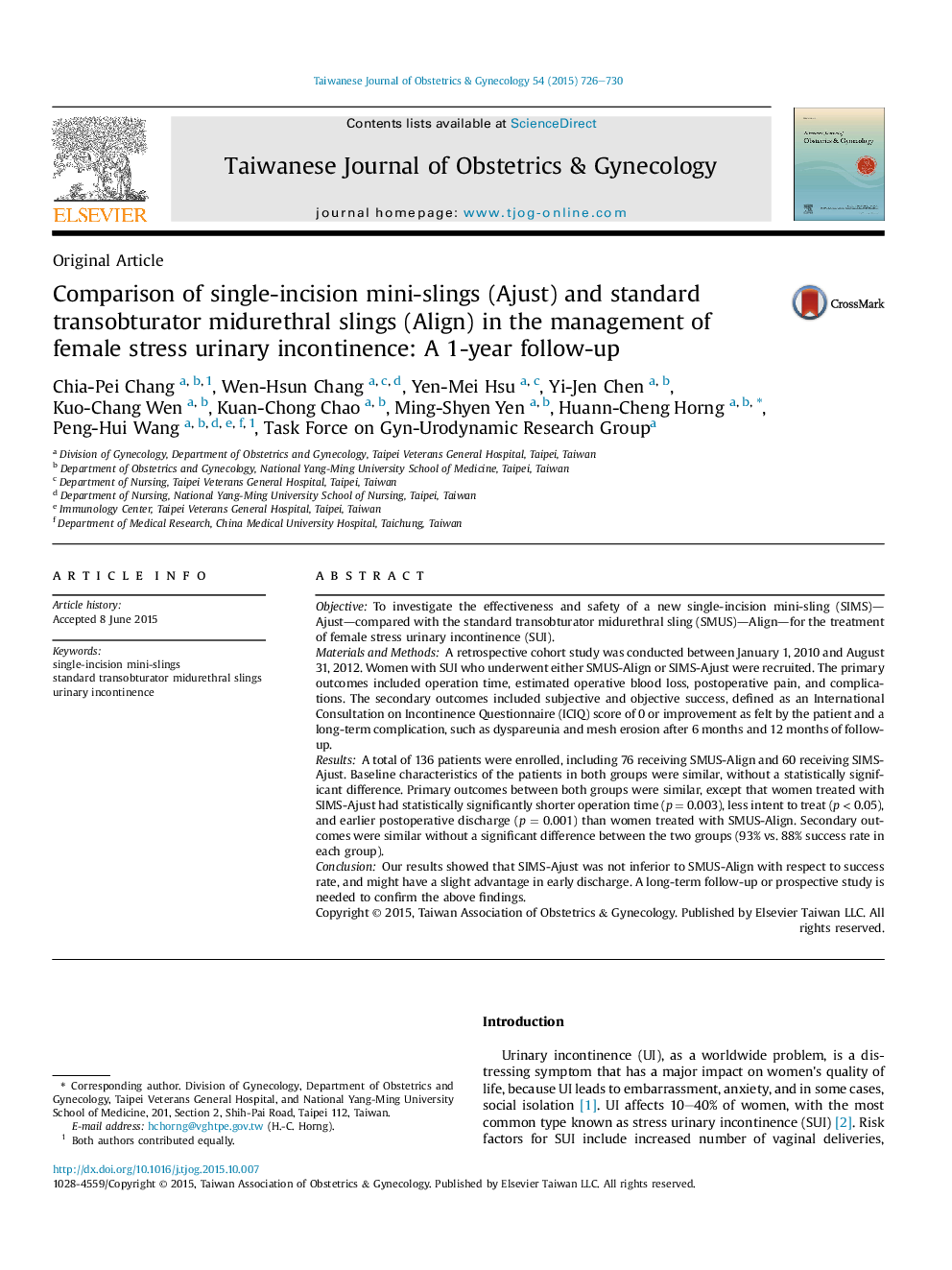| Article ID | Journal | Published Year | Pages | File Type |
|---|---|---|---|---|
| 3975245 | Taiwanese Journal of Obstetrics and Gynecology | 2015 | 5 Pages |
ObjectiveTo investigate the effectiveness and safety of a new single-incision mini-sling (SIMS)—Ajust—compared with the standard transobturator midurethral sling (SMUS)—Align—for the treatment of female stress urinary incontinence (SUI).Materials and MethodsA retrospective cohort study was conducted between January 1, 2010 and August 31, 2012. Women with SUI who underwent either SMUS-Align or SIMS-Ajust were recruited. The primary outcomes included operation time, estimated operative blood loss, postoperative pain, and complications. The secondary outcomes included subjective and objective success, defined as an International Consultation on Incontinence Questionnaire (ICIQ) score of 0 or improvement as felt by the patient and a long-term complication, such as dyspareunia and mesh erosion after 6 months and 12 months of follow-up.ResultsA total of 136 patients were enrolled, including 76 receiving SMUS-Align and 60 receiving SIMS-Ajust. Baseline characteristics of the patients in both groups were similar, without a statistically significant difference. Primary outcomes between both groups were similar, except that women treated with SIMS-Ajust had statistically significantly shorter operation time (p = 0.003), less intent to treat (p < 0.05), and earlier postoperative discharge (p = 0.001) than women treated with SMUS-Align. Secondary outcomes were similar without a significant difference between the two groups (93% vs. 88% success rate in each group).ConclusionOur results showed that SIMS-Ajust was not inferior to SMUS-Align with respect to success rate, and might have a slight advantage in early discharge. A long-term follow-up or prospective study is needed to confirm the above findings.
